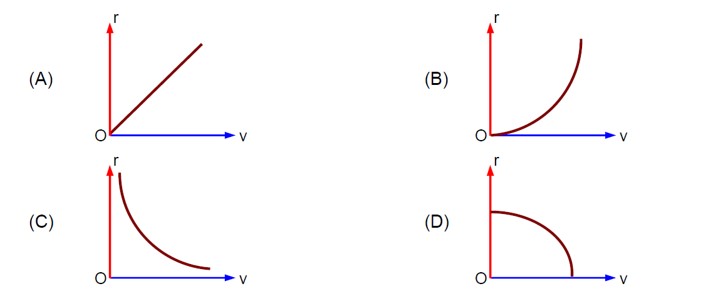Physics Gravitation
Get insights from 160 questions on Physics Gravitation, answered by students, alumni, and experts. You may also ask and answer any question you like about Physics Gravitation
Follow Ask QuestionQuestions
Discussions
Active Users
Followers
New answer posted
2 months agoContributor-Level 10
g? = g - ω²R ⇒ 0 = g - ω²R ⇒ ω = √ (g/R)
⇒ T = 2π/ω = 2π√ (R/g) = 2 * 3.14 * √ (6400 * 10³)/10)
New answer posted
2 months agoContributor-Level 10
A = Area swept ⇒ dA/dt = (1/2)r² (dθ/dt) = (1/2) (Mr²ω)/M = L / (2M)
New answer posted
2 months agoContributor-Level 10
U = mV (r) = -Cm/r
F = -dU/dr = -Cm/r² ⇒ The force which provides required centripetal force
⇒ mv²/r = Cm/r² ⇒ r = C/v²
New answer posted
2 months agoContributor-Level 10
The formula for escape velocity (v_e) is v_e = √ (2GM/R).
According to the question, the new escape velocity (v_e') from a new radius R' is related to the original escape velocity by 10v_e' = v_e.
10 * √ (2GM/R') = √ (2GM/R)
Squaring both sides:
100 * (2GM/R') = (2GM/R)
100/R' = 1/R
R' = R/100
If R is the radius of Earth (6400 km), then:
R' = 6400 km / 100 = 64 km
New answer posted
2 months agoContributor-Level 10
dW? = Eqdx
∫ dU? = ∫ kQ/x² dxq
W? = kQq (-1/x)|? ^ (R+y)
W? = kQq (y)/ (R) (R + y)
W? + W? = 1/2 mv²
V² = 2/m (kQqy/ (R) (R+y) + mgy)
V² = 2y (kQq/ (m (R) (R+y) + g) ; k = 1/ (4πε? )
Taking an Exam? Selecting a College?
Get authentic answers from experts, students and alumni that you won't find anywhere else
Sign Up on ShikshaOn Shiksha, get access to
- 65k Colleges
- 1.2k Exams
- 679k Reviews
- 1800k Answers

